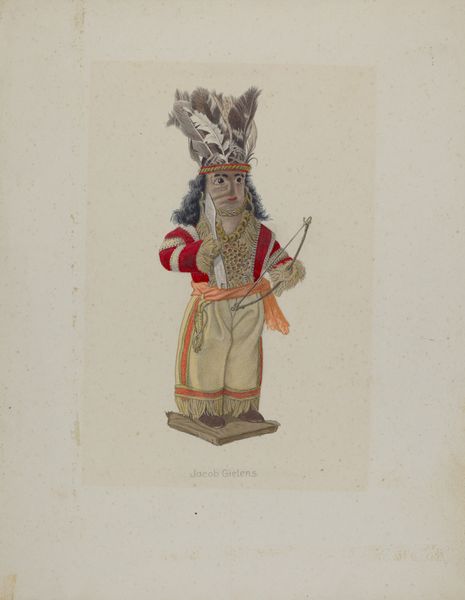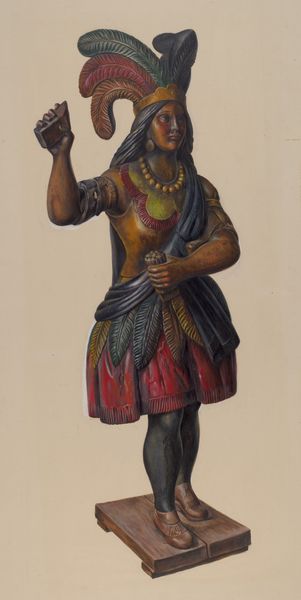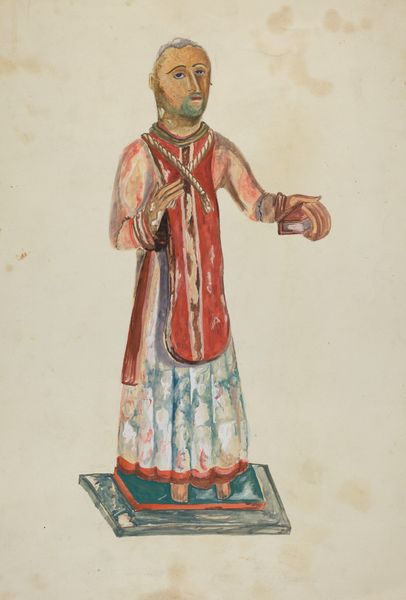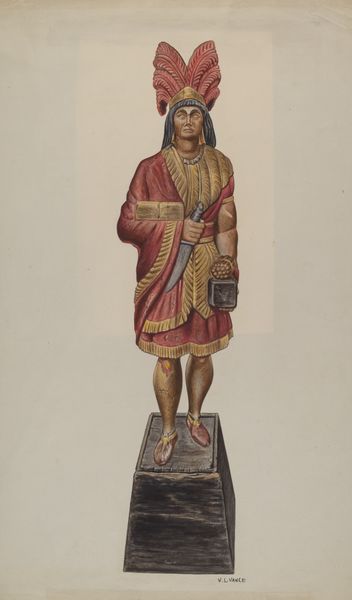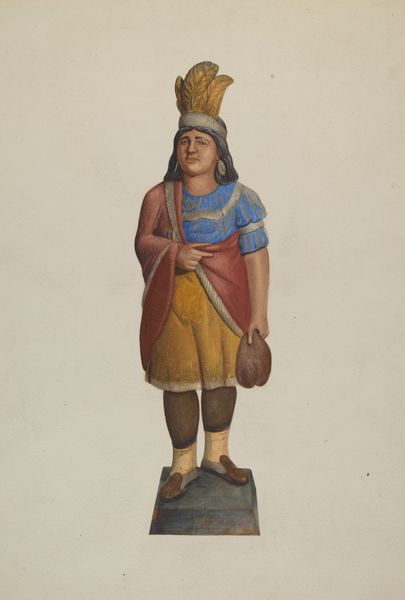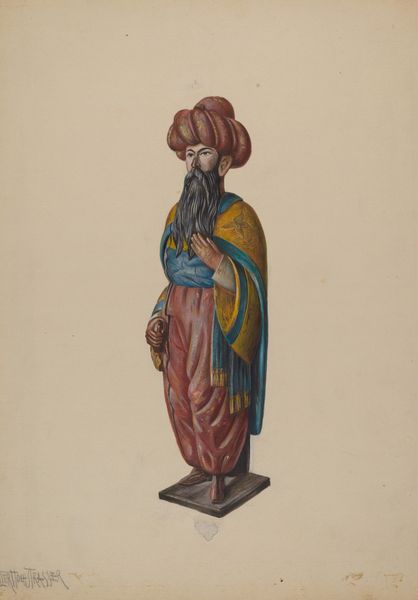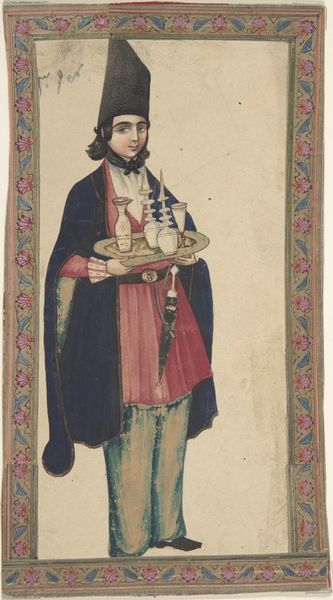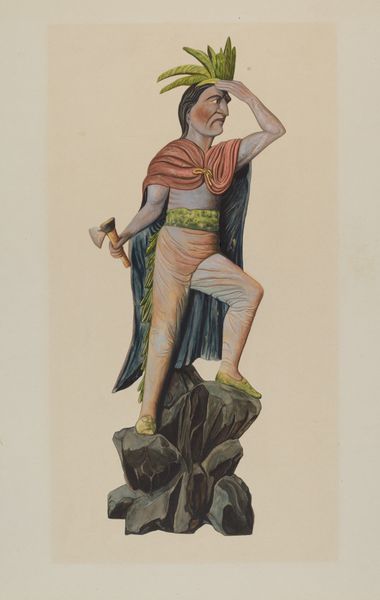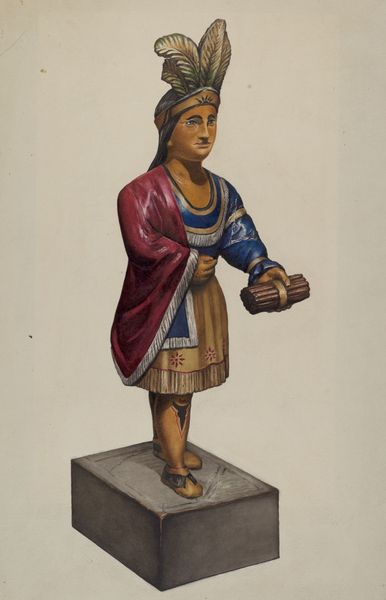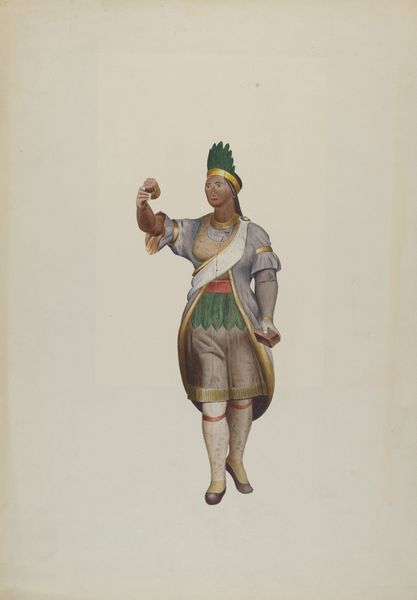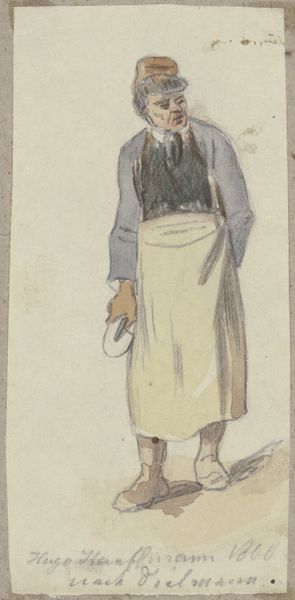
#
charcoal drawing
#
figuration
#
folk-art
#
portrait drawing
#
watercolour illustration
Dimensions: overall: 51.9 x 36.2 cm (20 7/16 x 14 1/4 in.)
Copyright: National Gallery of Art: CC0 1.0
Curator: Immediately striking, isn't it? The colours, a mix of muted blues and reds. I am fascinated by the details within Michael Riccitelli’s "Cigar Store Indian", created around 1938, crafted using watercolor and drawing techniques. Editor: It's…haunting. Melancholy. This figure feels trapped in a tableau, bearing the weight of a complicated history. A clash between romanticized representation and brutal reality, maybe? Curator: Exactly. The material choice, watercolor, evokes a fragility that the solid wood it mimics obscures. We see the interplay between representation and what is signified when looking at these faux cigar store figures. I can only imagine the labour taken, both in the design and construction phases. Editor: Right, these figures are intrinsically linked to the economics of exploitation and the performance of stereotypes. Their commodification reflects how Indigenous people were, and often still are, represented and consumed by a dominant culture. It becomes about racial fetishism. The gesture almost begs for one’s money, a haunting gesture of what was and is still happening today. Curator: I completely agree with the idea of exploitation that you suggested. Thinking about the craftsmanship—consider the number of these sculptures that were produced. These aren’t unique works; they are products, crafted and sold at a time of widespread anti-indigenous attitudes, revealing the culture of mass production as inherently intertwined with societal prejudices. The labour of whoever designed this item for distribution reflects the need for more thought in production. Editor: The choice to present an idealised, romantic image masks that history, whitewashing the displacement, violence, and erasure inflicted upon Native communities. The Crown, what a joke! And it makes you wonder who consumes this product of exploitation. In what ways do they reproduce its ideas and tropes in their day-to-day interactions? Curator: It presents uncomfortable questions. Seeing this through the lens of both craft and historical representation allows for nuanced consideration of its social effect. A portrait on cultural identity in America, almost a folk rendering. Editor: Precisely. It's a layered representation, prompting us to confront not just the image but the complex history that it represents, how materials, mass production, gender, race and commerce were so frequently intertwined, but the lasting repercussions of that legacy today. Curator: It makes one stop and reflect when the means of consumption outweigh all things humane, even today. Editor: Yes, and how these histories are subtly perpetuated.
Comments
No comments
Be the first to comment and join the conversation on the ultimate creative platform.
